The OnePlus One Review
by Joshua Ho on November 19, 2014 8:00 AM EST- Posted in
- Smartphones
- Android
- Mobile
- OnePlus
GPU Performance
As always, it's important to test the performance of the GPU in order to better understand how a device will perform in workloads such as 3D gaming and similar situations. In the case of the OnePlus One and its Snapdragon 801 SoC, we're looking at an Adreno 330 GPU clocked at 578 MHz. While this is a known quantity by this point, it's still worth going over simply to verify that performance is in line with what we expect from this setup.
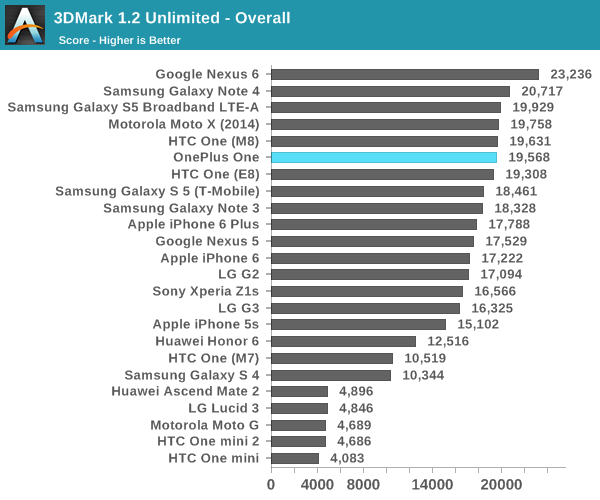
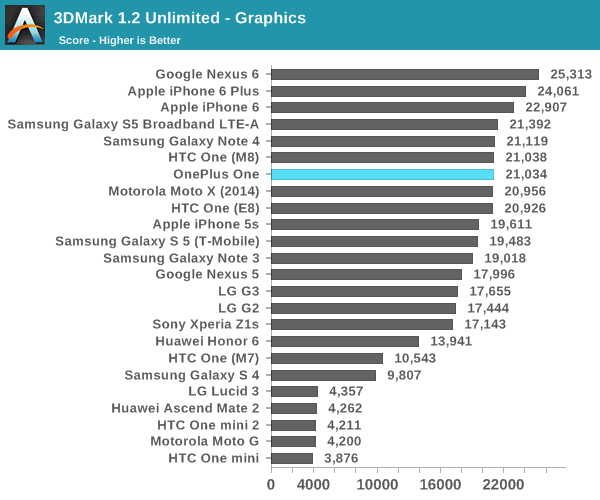
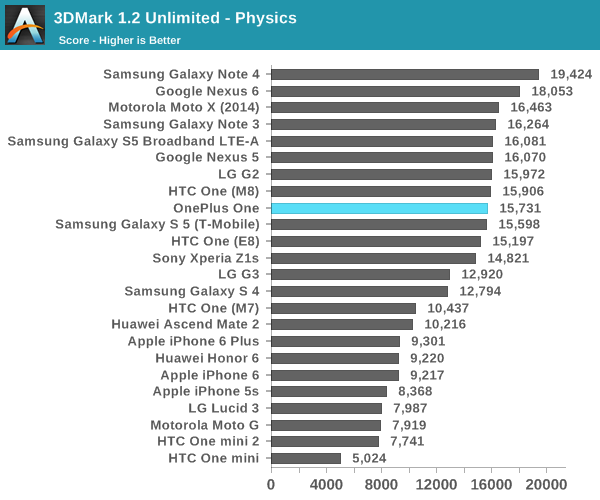
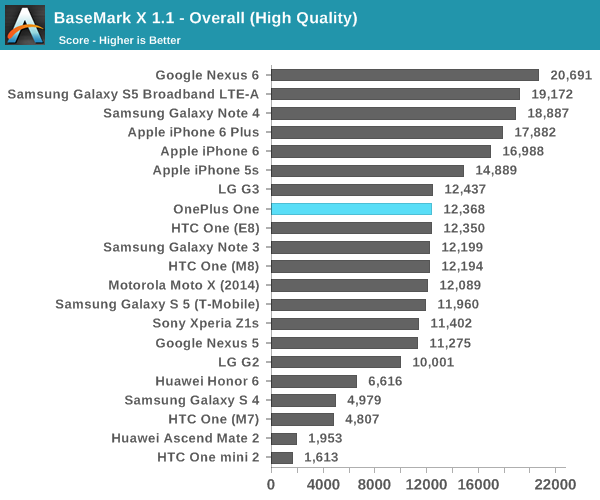
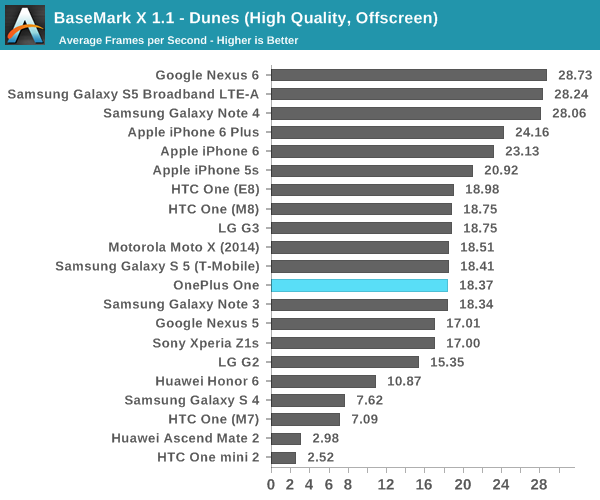
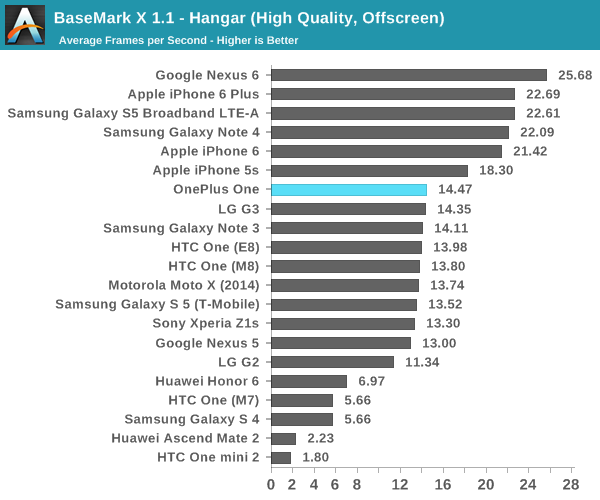
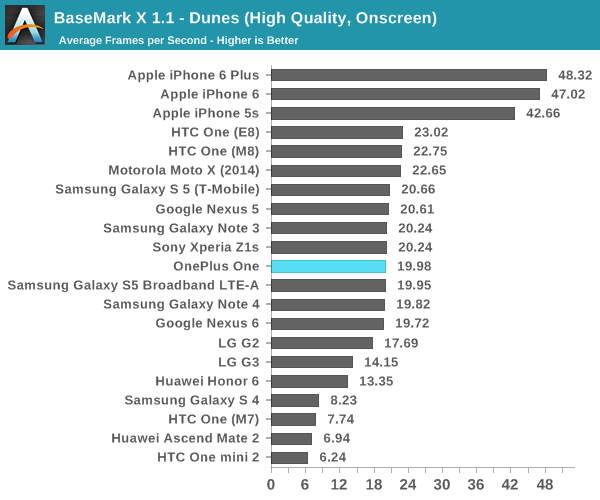
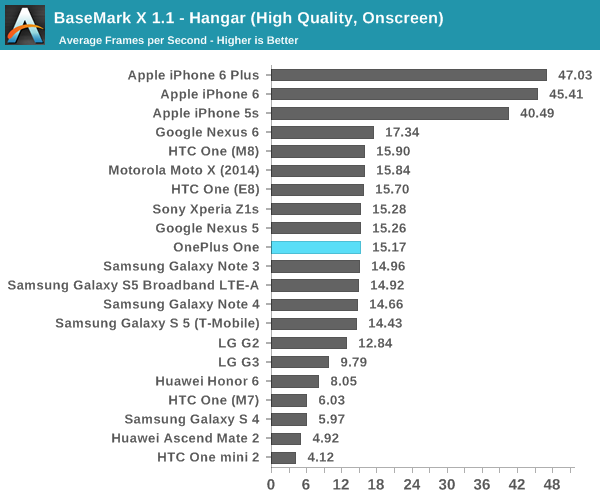
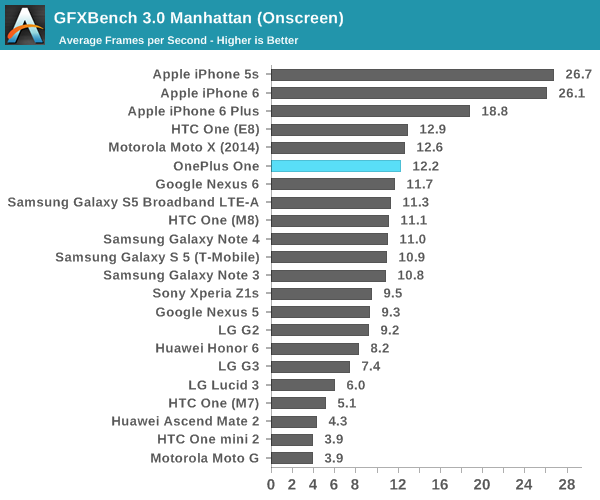

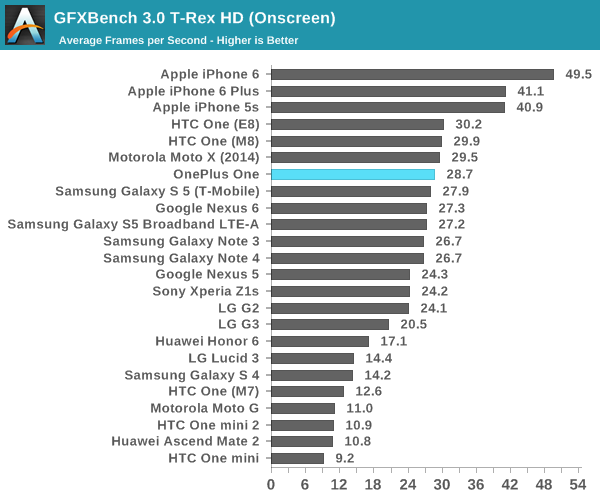
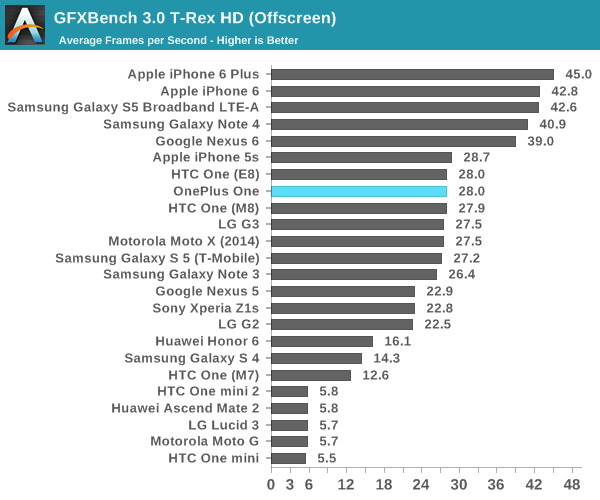
As one might be able to guess, the OnePlus One's graphics performance is where we expect it to be. At this point in the device lifecycle, the OnePlus One ends up behind the latest and greatest, but performance is more than acceptable as most of the GPU performance gains are spent on driving higher resolutions instead of better performance.
NAND Performance
In truth, storage performance tends to fall to the background on the long list of things that affect user experience. However, while it takes large improvements for a user to notice faster storage, poor storage performance is extremely obvious and painful to live with. To test this, we use Androbench with some custom settings to reduce variability in results. While Androbench seems to be an invalid test on Android 5.0, on Android 4.4 the test continues to work well for its purpose so we can disclose these results.
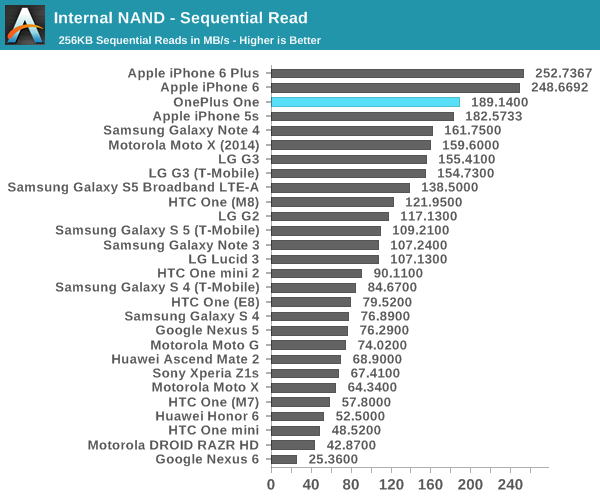
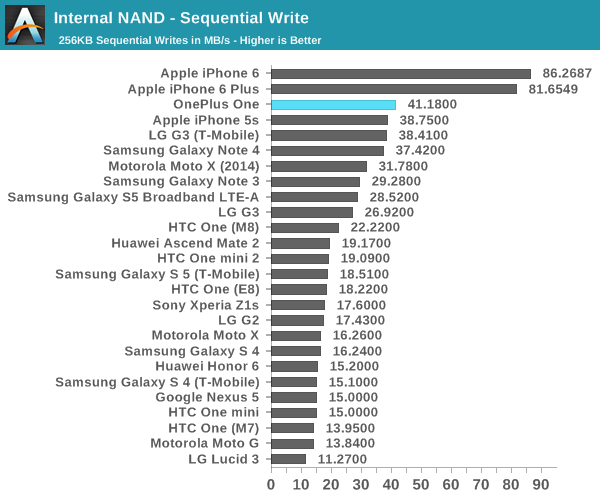
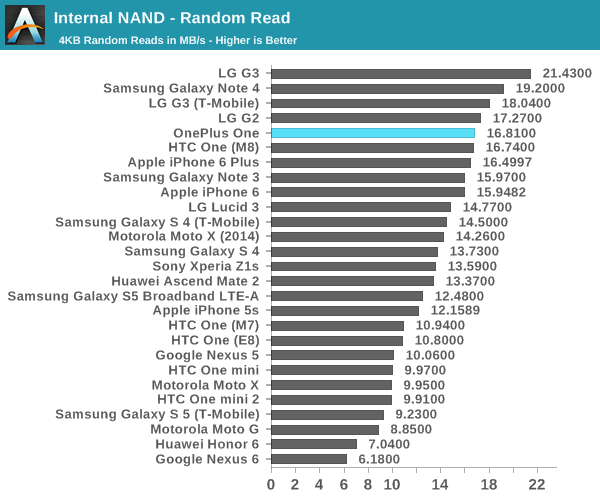
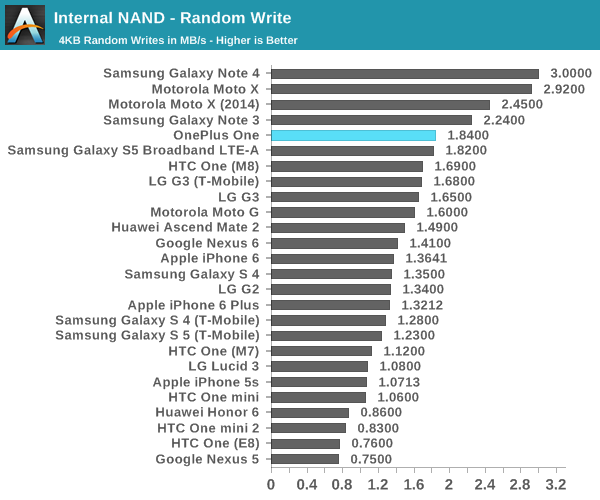
In this test, it's clear that OnePlus has kitted out the One with some extremely high-quality NAND (which appears to be a Toshiba solution) , but random I/O isn't quite as impressive. This may be due to the controller used. At any rate, one shouldn't have any problems with lag resulting from poor storage performance as the eMMC used in this device is incredibly high-end for a device of this price.










148 Comments
View All Comments
melgross - Wednesday, November 19, 2014 - link
I know this may seem to be a very minor issue and nitpicking, but I would just like to comment that the thinness of the oleophobic coating, if there is one, would have no effect on the feel of the screen. You interact with the surface of the coating, not the thickness. It might lead to a shorter effective life for the coating, but not a difference in swiping feel.I bothers me, because this is something that a little bit of thought would have revealed as being illogical. And if writers write things that are illogical in one part of the article, where else will they do that where we won't notice it, and come to a wrong conclusion because of it?
cr0wb4r - Wednesday, November 19, 2014 - link
I think two options in CM11S will make all the nit picks worthwhile: Profiles and double tap to wake.Having a Home and Work profile allows me to turn off/on lock screen. Huge
Double tap to wake and see notifications and then double tap status bar area to go back to sleep. Again Huge.
Just my 2 cents on the plethora of CM11S options
cr0wb4r - Wednesday, November 19, 2014 - link
Sorry, forgot to mention that Profiles make it AUTOMATIC to turn on/off lock screen. I realize this is obvious to most...phoenix_rizzen - Thursday, November 20, 2014 - link
Profiles have been available in Android ROMs for at least a year now, if not longer. It's one of the first things I turn off when flashing an AOSP-based ROM on my phone.DT2W has been available in Android ROMs within a month or so of LG releasing their sources, as they were the first ones to enable it (works wonderfully with the LG G2 where the power button is on the back).
IOW, neither of these features are exclusive to CM 11S, or even CM, or even just AOSP.
toyotabedzrock - Wednesday, November 19, 2014 - link
I have read that the updated version of Chrome running on lollipop on the nexus 5 sees a rather large bump in the Octane benchmark.Allan_Hundeboll - Wednesday, November 19, 2014 - link
I was beginning to think this site would never review the OPO, much appreciated.But:
Oneplus One has strong reception! (But lacks LTE 800Mhz band)
And people should know that a 5.5" phablet is big, so how can the size be a problem?
Maybe the author also think the iphone 6+ is just too big? Let customers decide what screen size he/she wants, please.
Joshua Ho seem to forget this phone wasn't made for average joes! CM is all about customization so how can too many options be a problem? Please understand a lot of geeks chose android because we appreciate the almost endless possibilities and CM takes this further than google's stock android.
So this phablet is perfect for XDA members NOT for someone like my mother.
mfmx - Thursday, November 20, 2014 - link
Are you sure your mother wouldn't like it? My grandmother that is 96 years old thinks 5,5" is the perfect size for her. Also my mother that has a 5,3" phone doesn't want a smaller device.Munna2002 - Friday, November 21, 2014 - link
My mother and grand aunt also like the size of the OPO.grayson_carr - Thursday, November 20, 2014 - link
The display calibration results are perplexing to me. I know when the phone was first released, it was using a calibration profile created by then CyanogenMod employee François Simond (supercurio), who has also worked with Anandtech on reviews in the past. It didn't surprise me that the screen was very accurate then. But then a couple months ago, OnePlus released an update that did away with supercurio's calibration profile (and let supercurio go / didn't renew his contract) because too many people were complaining that the screen looked too yellow (warm), as 6500K often does to the untrained eye. The update shifted the white point drastically up to the 8000K range (super cold and blue looking) and presumably made colors less accurate. I sold the device a short time later due to annoying bugs, but now I'm confused by these results. What version of CM11S was this phone running as tested? Did you test an old version of the software or did they reinstate the proper calibration profile in a recent update? This review could mislead some people hoping for a properly calibrated screen if you did indeed test the One with the older software.techcrazy - Thursday, November 20, 2014 - link
Where is Sony Xperia Z3 and Z3 Compact review?